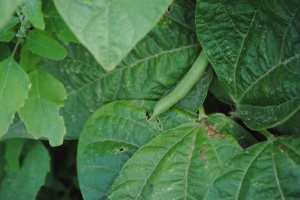A few weeks ago, a question was asked on Facebook by a local news station regarding farmers and government payments. Don’t worry, I won’t go into my feelings about that topic right here…but I do want to try to explain something to those that aren’t involved in agriculture.
It seems as if there is a misconception about farmers. (Not shocking, I know.) But the comment that was made online really struck a chord with me…and it should for you, too. You can read about my reaction here.
But I thought maybe we should have some numbers, so that people can understand what really goes into farming.

These are our "fleet" to bring in the crop. Far from new, but they get the job done.
Now, to be honest with you, I’m using numbers for my area, so things can be markedly different where you’re at…but in the end, it should all pencil out about the same.
Let’s start with the basics. Crops are figured by the acre (which is roughly half a soccer field). So most of the items you purchase to put the crops in and take them off are calculated based on how much it costs per acre. Crops that I will use in these examples are spring wheat, corn and soybeans…some of the more common crops in my area.
Check this out:
Example 1: Spring Wheat
The average yield (crop that they harvest) per acre for spring wheat is 49 bushels/acre in my area. The average market price is estimated at $7.54 per bushel. If you multiply that out, you would come up with an average income of $369.46 per acre. Not too bad, eh?
Well, that just doesn’t happen by itself. Let’s look at what it took to get there. The average direct costs associated with planting, pest management (taking care of bugs), nutrient management (taking care of soil), insurance, fuel, repairs, etc. is $192.92 per acre. Indirect costs, such as overhead, machinery depreciation, purchasing new machinery (usually just new to you, not new-new) and land charges, run about $117.52 per acre. The costs total $310.44 per acre. Hmmm…a little too close to that first number, right?
So, in an average year, planting spring wheat, a farmer can expect to make roughly $59 per acre. And that’s with fuel costs averaged at $3.40/gallon for gas and $3.20/gallon for diesel. We all know what is forecasted for those numbers, right?
I’ll spare you all the rundowns of the other two crops, and just give you the final numbers: Soybeans would average about $103 per acre and corn (for grain) would average about $150 per acre.
So what’s the average farm size in Dickey County (where I live)? It’s 1,100 acres. So let’s say we planted our whole farm to corn, and we had 1,100 acres, we would (according to these numbers) roughly make $165,000. (Also remember, that would be if you planted every acre and were able to harvest it. Most of the time, there are significant areas of drowned-out crops, etc.) And if we planted our whole farm to wheat? $65,000. (And let me tell you, we would never, ever dream to plant our whole farm to one crop. You remember that saying about all your eggs in one basket, right?)
But seriously, folks, that’s not how it works. Those are the numbers we shoot for and strive to reach…and like most professions, very little goes as planned.
For example (and these hit a little too close to home): imagine having to harvest all your wheat in one direction, doubling your fuel costs. Or having a pest move in, doubling your pest management inputs. Or having a wet spring, dry summer, late fall, whatever have you may, lowering your yields substantially.
No, to be honest, farmers on a national average follow this graphic a little more closely:

And that would be why so many farmers, and/or their partners, seek off-farm employment.
But we will plant a crop this spring, in hopes that we’ll meet or exceed our goal yields, while trimming as much off the expenses as we can…just like any good business person would do.
And that’s a fact.
P.S. I would especially like to thank Kacey Holm, our county extension agent, for his assistance in getting me these numbers. Extension ROCKS!






































